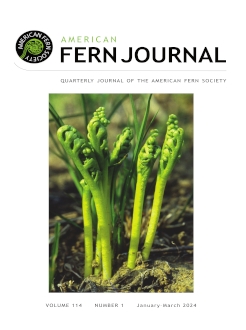Botrychium farrarii is described as a new species from the Bighorn Mountains of Wyoming, U.S.A. Based on allozyme patterns and chloroplast and nuclear sequence data, it is inferred to be a diploid and the maternal (i.e., chloroplast donor) parent of three allotetraploids, B. furculatum, B. minganense, and B. paradoxum, with which it shares similar morphological traits. Botrychium farrarii is closely related to B. campestre sensu lato, from which it differs primarily by having longer trophophore and sporophore stalks. A key to B. farrarii and morphologically-similar species is presented. At this time, B. farrarii is documented by few individuals from four small, montane forest openings and roadsides in close proximity within a single watershed. Its full geographic range and habitat preferences remain unknown, and we hope this paper will spur discovery of additional populations. Until the species is known to be more abundant, it would be prudent to manage each site to maintain population viability, including avoidance of actions that could adversely impact plant persistence or habitat suitability.
How to translate text using browser tools
1 March 2024
Botrychium farrarii (Ophioglossaceae), a New Diploid Moonwort Species from the Bighorn Mountains of Wyoming, U.S.A.
Ben S. Legler,
Steve J. Popovich
ACCESS THE FULL ARTICLE

American Fern Journal
Vol. 114 • No. 1
January-March 2024
Vol. 114 • No. 1
January-March 2024
allopolyploidy
allozymes
cryptic species
taxonomy




